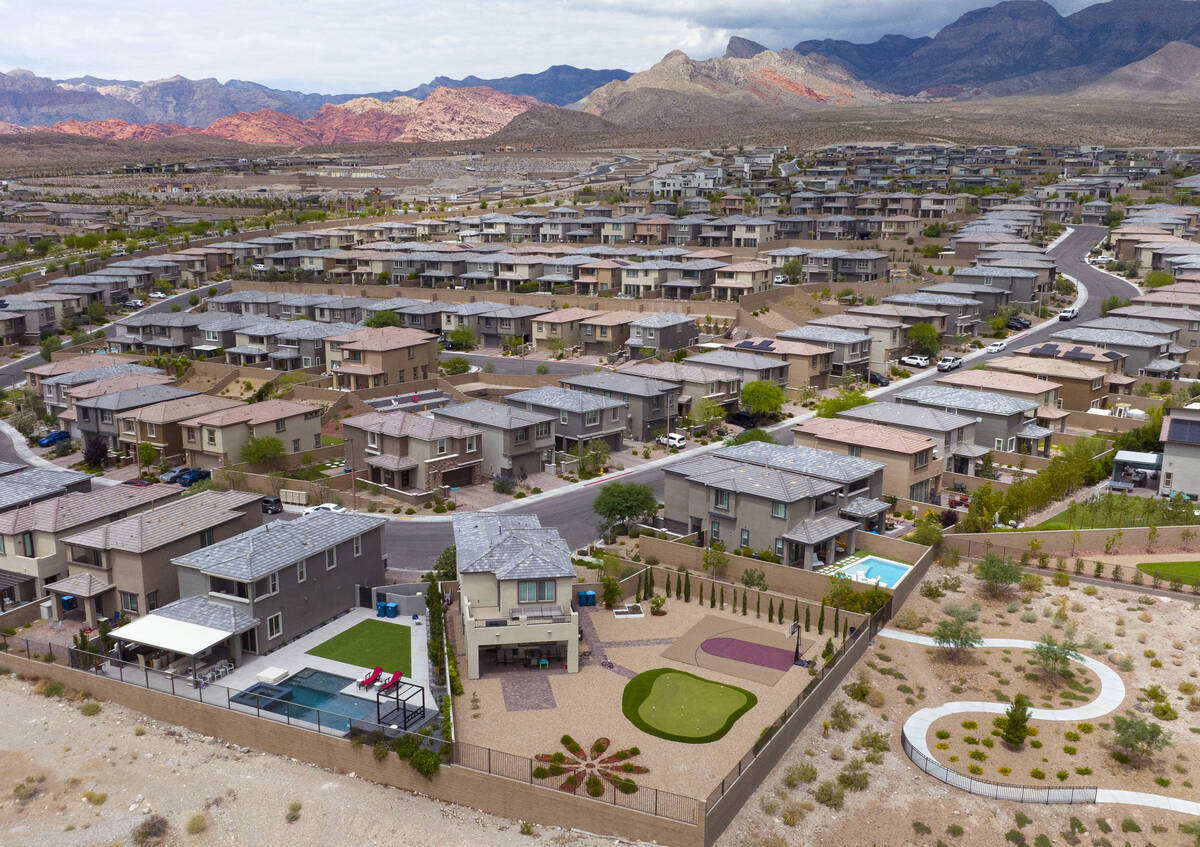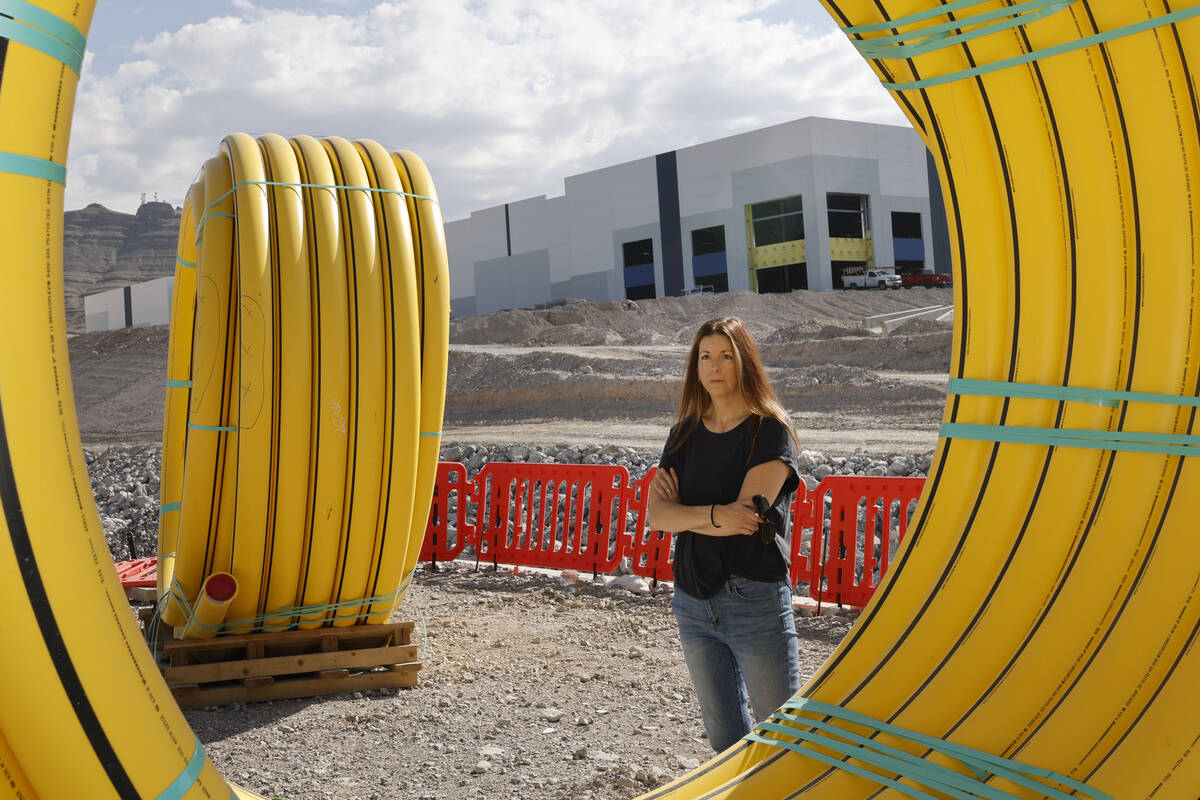Las Vegas real estate news you may have missed in 2023
The Las Vegas Valley real estate market — from residential to commercial — has been on a roller coaster ride in 2023.
Home sales were their lowest since 2008, but this was after a record-breaking 2021 and first half of 2022. Industrial demand slowed in the third quarter as new supply of space dropped substantially from earlier in the year, and fewer tenants moved into completed projects. But the hospitality sector had one of its best years in perhaps decades as two resorts, including the long-awaited Fontainebleau opened its doors 16 years after it first started construction.
Forecasters are predicting the Federal Reserve will slash the overnight funds rate sometime next year as inflation cools, which could give a boost to the market. But given the current macroeconomic climate, it’s anyone’s guess as to where the economy will actually head in 2024.
Here’s a look back at some of the interesting real estate stories and trends that took place in the valley from single-family housing to industry space.
Fewer homes on the market for sale
If there’s one thing keeping the local housing market locked into its current situation, it’s a lack of inventory for real estate agents to sell. So how did we get here? It dates back to the early days of the pandemic when governments around the world shut down the global economy for months with Covid restrictions. This bottomed out the economy and forced the Federal Reserve to slash interest rates down to zero. Following massive injections of cash into the market, both a buying, selling and building boom took place across the U.S. housing market.
But the party didn’t last long as inflation soared in 2022, forcing the Fed to dramatically increase rates to slow spending, which led mortgage rates to reach a more than 20-year high. Now a huge chunk of homeowners in the valley and across the country are locked into historically low interest rates and unwilling to part with their cheap monthly mortgage payments. This has, in turn, zapped inventory, and the local real estate community is feeling the pain as sellers refuse to drop their prices.
The rise (and slowing again) of industrial
If the Southern Nevada economy really wants to make good on its promise to diversify the economy from gaming and tourism, pro sports teams are a good start, but it still falls within the “fun economy” and highly volatile discretionary dollars from U.S. consumers. Creating a robust industrial base is much more of a safe bet, experts say and the emergence of the Apex Industrial Park in North Las Vegas, delayed for years, is a great sign.
There were a number of huge deals signed this year, including Prologis buying 879 acres at Apex Industrial Park, where it plans to build an 11 million-square-foot industrial project in North Las Vegas. Additionally, a massive HeyDude distribution center also was set to open this year
After a boom in the first part of the year and a flurry of announced but yet-to-be-completed projects, the supply of industrial has waned since the second quarter with fewer tenants making deals.
Mega resort properties finally come to fruition
In the works for nearly two decades, Fontainebleau finally opened on Dec. 13. It’s a project that has been marred by setback after setback, including a recession-induced bankruptcy and pandemic delays. Now, the 67-story, 3,644-room property is the tallest hotel in Las Vegas.
The $2.3 billion Sphere opened to much fanfare in September, after its own share of controversy.
Plus, Station Casinos’ parent company Red Rock Resorts opened its first ground-up resort-casino project in more than a decade. Located in the southwest valley, Durango Resort & Casino, received big crowds and positive reviews in its early days.
It could be years before Vegas again sees as many high-profile resort and entertainment properties open in one year.
Summerlin continues to grow
Known as the prime place to live in the valley, Summerlin has been chugging along for years, and is now entering its final phase of development. The master-planned community racks up awards every year, and in 2023 was named as one of the top-selling in the country as it currently has 15 active neighborhoods, with a handful more on the books.
It’s downtown core is finally filling in and one has to wonder if the late tycoon Howard Hughes thought this much would come out of a cheap land deal he made all the way back in the 1950s.
Office space anyone?
The much publicized commercial real estate crisis — namely office space — has a lot of forecasters worried. The pandemic brought about a remote work revolution, and employees have still yet to return to the office in any real numbers across the country. This has left the downtown areas of some major cities looking like ghost towns, most notably San Francisco and Los Angeles.
But Las Vegas is not known for having a central business district, and most of its office space is suburban, and littered throughout the valley. This has been a blessing in disguise as the sector has largely avoided a massive outflow of tenants, and has even been able to pick up relocating businesses, a large swath of them from California.
The rise of Enterprise
If anyone is putting money on places that will be one of the fastest-growing areas in the U.S. when 2023 population statistics are confirmed, you might want to bet on the unincorporated township of Enterprise in the southwest valley. The area is full of construction, but with a particular abundance of light industrial and apartment projects.
From the planned high-speed rail Brightline Station linking the area directly to Los Angeles, a potential NBA arena and mega casino, plus a number of high-profile resort and residential projects in the works, Enterprise is in for a boom.
The area’s location and acres and acres of vacant land make it ripe for development.
Contact Patrick Blennerhassett at pblennerhassett@reviewjournal.com.



















